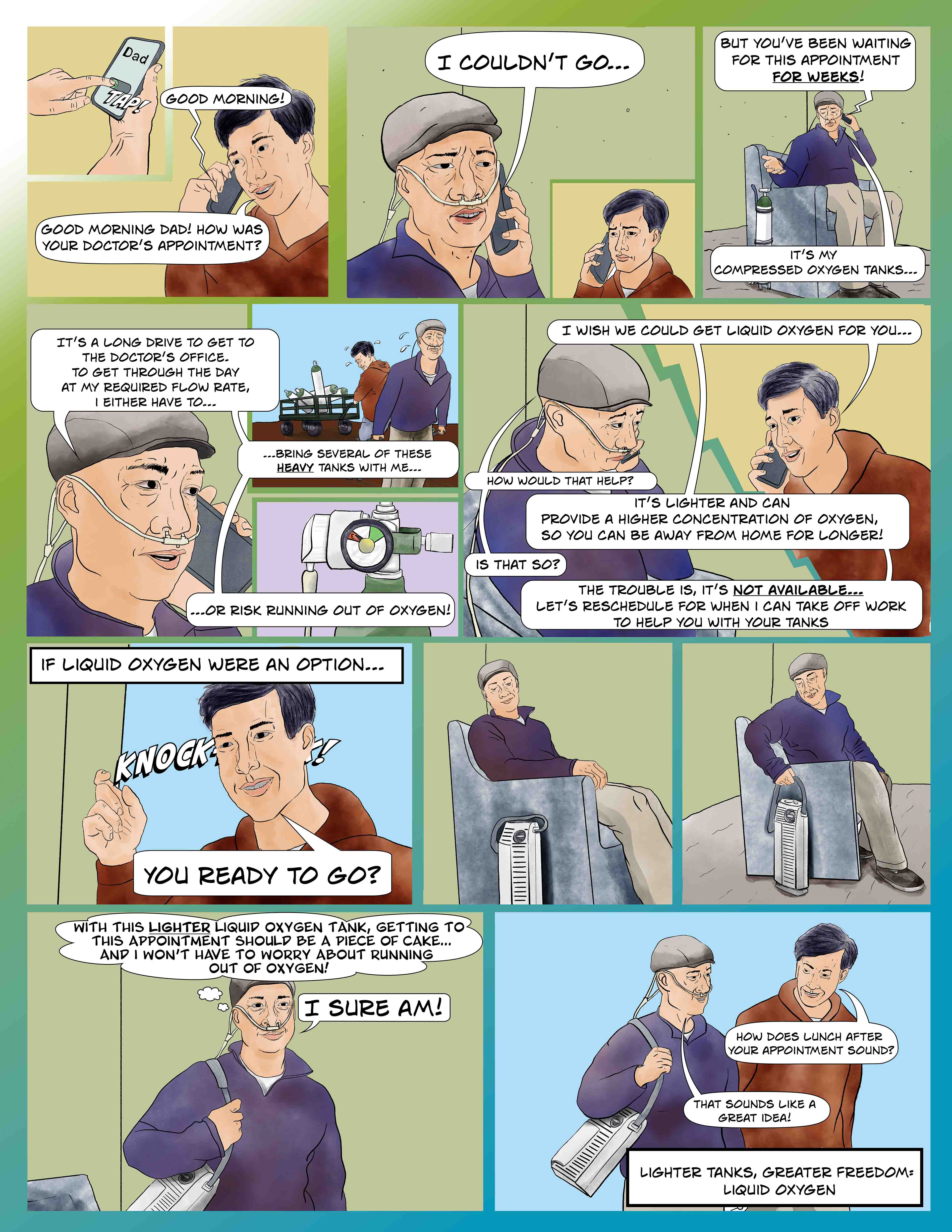Breath by Design: How One Med Student Is Illustrating Oxygen Access


When Andrew Engel entered medical school at Thomas Jefferson University, he never expected his love for painting to shape how he thinks about patient care. But in his third year of medical school, Andrew is already demonstrating how art can make a difference in communicating and understanding complex health conditions like pulmonary fibrosis and interstitial lung disease.
Andrew’s journey began in an elective called Graphic Medicine, a humanities course offered at Jefferson that explores how visual storytelling can support patient education and build empathy in healthcare. With just a few classmates and a handful of focused sessions, the course gave Andrew space to reconnect with his creative side. A former studio art minor at Vanderbilt University, he’s always had a passion for painting and illustration—so the chance to merge that with medicine was a natural fit.
“I’ve always loved to draw and paint,” he says. “But I hadn’t really focused on how that could intersect with medicine—until now.”
Andrew’s artistic skills turned out to be the perfect solution for illustrating the complex challenges of oxygen access faced by people living with pulmonary fibrosis—a progressive lung disease that makes breathing increasingly difficult. Motivated by a family member’s personal battle with the condition and supported by Dr. Ross Summer, head of the Interstitial Lung Disease Clinic at Thomas Jefferson, Andrew set out to create a clear, visually engaging graphic representation of oxygen therapies for use by the Pulmonary Fibrosis Foundation. His goal was to transform the dense, text-heavy information patients often receive into something more accessible, understandable, and hopeful.
“Before I started this project, I hadn’t done much research—I only knew about compressed oxygen tanks,” Andrew says. “Once I learned more, it really hit me: people using those tanks are often locked in their homes. That’s heartbreaking. People shouldn’t have to be stuck inside just because they rely on oxygen. They need to be able to live their lives—and oxygen is a vital therapy that should support that, not limit it.”
His illustration captures the struggle of simply getting to a doctor’s appointment with bulky compressed oxygen tanks—sharply contrasted with the greater freedom and mobility that liquid oxygen can provide. Through bold visuals and thoughtful design, Andrew hopes the piece will make a complex topic feel more approachable for patients and caregivers navigating pulmonary fibrosis.
"There are serious barriers to oxygen therapy,” he says. “By making this information visual, I hope more people understand just how much of a difference liquid oxygen can make—and why it needs to be more widely available to the patients who need it.”
“There are serious barriers to oxygen therapy,” he explains. “By making this information visual, I hope more people will understand just how much of a difference liquid oxygen can make – and why it needs to be widely available to the patients who need it.”
Andrew sees graphic medicine as both a personal outlet and a professional tool he plans to keep using. More artwork is already in the pipeline, with a focus on making medical concepts more patient-friendly and engaging.
“If a visual can help someone feel less overwhelmed or help a provider better explain something—that’s a win,” Andrew says.
About the Pulmonary Fibrosis Foundation
At the Pulmonary Fibrosis Foundation, we are dedicated to making a difference in the lives of those affected by pulmonary fibrosis (PF), a form of interstitial lung disease (ILD). Pulmonary fibrosis is a process that causes lung scarring, in which fibrotic tissue blocks the movement of oxygen from inside the tiny air sacs in the lungs into the bloodstream. Low oxygen levels, and the stiff scar tissue itself, can cause people with pulmonary fibrosis to feel short of breath, particularly when walking and exercising. Over 250,000 Americans are living with PF today. Approximately 50,000 new cases are diagnosed each year and as many as 40,000 Americans die from idiopathic pulmonary fibrosis (IPF) each year.
As the largest organization committed to raising awareness and providing support, our mission is to accelerate the development of new treatments and ultimately a cure for pulmonary fibrosis. Until this goal is achieved, the PFF is committed to advancing improved care of patients with PF and providing unequaled support and education resources for patients, caregivers, family members, and healthcare providers.
